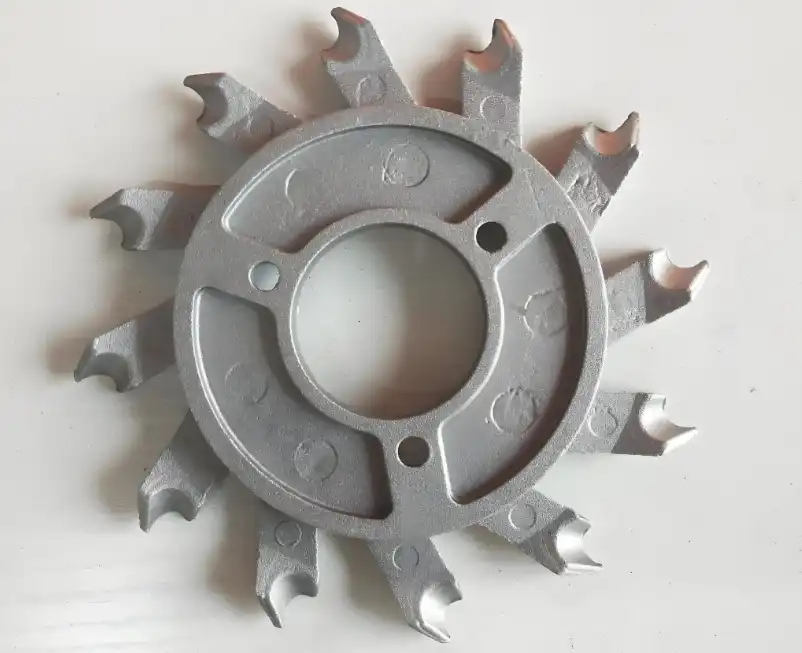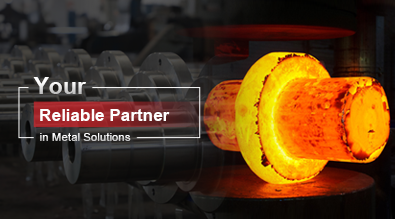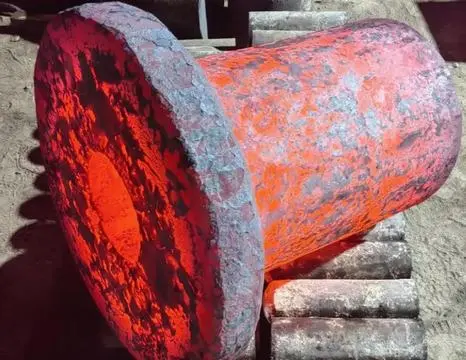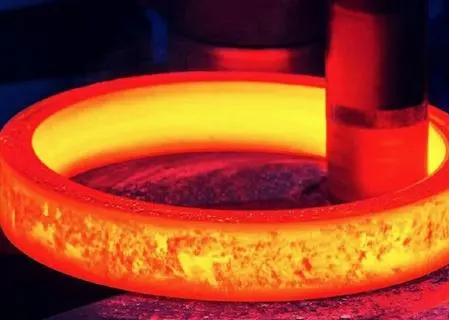Methods Used in Water Glass Casting
Water glass casting, also known as sodium silicate casting, is an innovative and versatile method used in various industries for creating intricate and detailed molds. This process involves the use of water glass, a liquid mixture of sodium silicate and water, as a binder for sand or other refractory materials. The resulting molds are capable of producing high-quality metal castings with excellent surface finish and dimensional accuracy. In this blog, we'll explore the different methods and techniques employed in water glass casting, discussing their advantages, applications, and potential challenges.

What are the primary advantages of using water glass in casting processes?
Enhanced Mold Strength and Stability
Water glass casting offers significant advantages in terms of mold strength and stability. The sodium silicate binder, when mixed with sand or other refractory materials, creates a robust and durable mold that can withstand the high temperatures and pressures associated with metal casting. This enhanced strength allows for the production of more complex and intricate designs, as the mold is less likely to deform or break during the casting process. Additionally, the water glass binder provides excellent dimensional stability, ensuring that the final cast product closely matches the intended design specifications. This improved mold integrity also contributes to reduced scrap rates and improved overall casting quality, making water glass casting an attractive option for manufacturers seeking to optimize their production processes.
Improved Environmental Performance
One of the key benefits of water glass casting is its environmentally friendly nature. Unlike traditional organic binders used in sand casting, water glass is inorganic and does not produce harmful emissions during the casting process. This makes it an excellent choice for manufacturers looking to reduce their environmental impact and comply with stringent environmental regulations. The use of water glass also eliminates the need for toxic chemicals often associated with other casting methods, creating a safer working environment for employees. Furthermore, the molds produced using water glass can be easily reclaimed and recycled, reducing waste and promoting sustainability in the casting industry. This eco-friendly aspect of water glass casting has made it increasingly popular among environmentally conscious manufacturers and consumers alike.
Cost-Effective Production
Water glass casting offers significant cost advantages compared to other casting methods. The raw materials used in this process, primarily sodium silicate and sand, are relatively inexpensive and readily available. This helps to keep production costs low, especially for large-scale manufacturing operations. Additionally, the water glass binder cures quickly at room temperature, eliminating the need for expensive heating equipment and reducing energy consumption. The improved mold strength and stability also contribute to cost savings by reducing scrap rates and minimizing the need for post-casting finishing operations. Furthermore, the ability to reclaim and recycle the mold materials further enhances the cost-effectiveness of water glass casting, making it an attractive option for manufacturers looking to optimize their production costs without compromising on quality.
How does the water glass casting process differ from traditional sand casting?
Binder Composition and Properties
The primary difference between water glass casting and traditional sand casting lies in the binder composition and properties. In water glass casting, sodium silicate serves as the binder, while traditional sand casting typically uses organic binders such as phenolic resins or furan. The inorganic nature of water glass offers several advantages, including improved environmental performance and enhanced mold strength. The sodium silicate binder also exhibits unique properties that contribute to the casting process. For instance, it has excellent flowability, allowing for easy mixing with sand and other refractory materials. This ensures uniform distribution of the binder throughout the mold, resulting in consistent strength and quality. Additionally, the water glass binder can be easily controlled and manipulated through the addition of various additives, allowing for customization of mold properties to suit specific casting requirements.
Curing Mechanism and Time
The curing mechanism and time in water glass casting differ significantly from traditional sand casting methods. In water glass casting, the curing process is typically initiated by the introduction of carbon dioxide gas or other chemical hardeners. This triggers a chemical reaction that rapidly solidifies the sodium silicate binder, creating a strong and stable mold. The curing process in water glass casting is generally faster than in traditional sand casting, often taking only a few minutes to achieve sufficient strength for handling. This rapid curing time contributes to increased production efficiency and reduced cycle times. In contrast, traditional sand casting often requires longer curing times, especially when using organic binders that may need heat or chemical catalysts to fully cure. The faster curing time of water glass casting allows for quicker mold production and higher throughput, making it particularly suitable for high-volume manufacturing applications.
Mold Reclamation and Recycling
Water glass casting offers significant advantages in terms of mold reclamation and recycling compared to traditional sand casting methods. The inorganic nature of the sodium silicate binder makes it easier to break down and separate from the sand or other refractory materials after casting. This allows for a higher percentage of mold material to be reclaimed and reused in subsequent casting processes. The reclamation process typically involves crushing the used molds and treating them with water to dissolve the sodium silicate binder. The cleaned sand can then be dried and reused, reducing waste and raw material costs. In contrast, traditional sand casting methods using organic binders often face challenges in mold reclamation due to the difficulty in completely removing the binder residues. The improved reclamation efficiency of water glass casting contributes to its overall cost-effectiveness and environmental sustainability, making it an attractive option for manufacturers seeking to optimize their resource utilization and reduce waste.
What are the key considerations for successful implementation of water glass casting?
Material Selection and Preparation
Successful implementation of water glass casting requires careful consideration of material selection and preparation. The choice of sand or other refractory materials is crucial, as it directly impacts the quality and properties of the final casting. Typically, high-purity silica sand is preferred due to its excellent thermal stability and compatibility with the sodium silicate binder. The grain size distribution of the sand also plays a vital role in determining the surface finish and dimensional accuracy of the castings. Proper preparation of the sand mixture is essential, ensuring uniform distribution of the water glass binder and any additives used to modify mold properties. This often involves precise control of mixing ratios, mixing times, and temperature conditions to achieve optimal results. Additionally, the quality and concentration of the sodium silicate solution used as the binder must be carefully controlled to ensure consistent mold strength and curing characteristics across different batches.
Process Control and Optimization
Effective process control and optimization are critical for achieving consistent and high-quality results in water glass casting. This includes careful management of various parameters such as binder content, curing conditions, and mold compaction. The amount of sodium silicate binder used must be carefully balanced to achieve the desired mold strength without compromising permeability or causing defects in the final casting. The curing process, whether using CO2 gas or chemical hardeners, requires precise control to ensure uniform hardening throughout the mold. Factors such as gas flow rates, exposure times, and distribution patterns must be optimized to achieve consistent results. Mold compaction is another crucial aspect, as it affects the density and strength of the mold. Proper compaction techniques and equipment must be employed to ensure uniform density distribution and minimize the risk of mold failure during casting. Continuous monitoring and adjustment of these process parameters are essential for maintaining quality and efficiency in water glass casting operations.
Quality Control and Troubleshooting
Implementing robust quality control measures and effective troubleshooting procedures is essential for successful water glass casting operations. Regular testing of mold properties, such as compressive strength, permeability, and surface hardness, helps ensure consistent quality and identify potential issues early in the process. Monitoring the chemical composition and properties of the sodium silicate binder is also crucial, as variations can significantly impact mold performance. Common challenges in water glass casting include mold cracking, insufficient strength, and poor surface finish. These issues can often be addressed through careful adjustment of process parameters, such as binder content, curing conditions, or sand grain distribution. Proper storage and handling of raw materials, particularly the sodium silicate solution, is also critical to prevent degradation and maintain consistent performance. Establishing a systematic approach to troubleshooting, including root cause analysis and corrective action procedures, helps minimize downtime and maintain high-quality production in water glass casting operations.
Conclusion
Water glass casting has emerged as a versatile and efficient method for producing high-quality metal castings. Its advantages in terms of mold strength, environmental performance, and cost-effectiveness make it an attractive option for various industries. By carefully considering material selection, process control, and quality management, manufacturers can successfully implement water glass casting to achieve superior results. As the industry continues to evolve, further advancements in water glass casting technology are likely to expand its applications and enhance its capabilities, solidifying its position as a valuable tool in modern casting operations.
China Welong was found in 2001, certified by ISO 9001:2015, API-7-1 quality system, dedicated to the development and supply of customized metal parts which used in different kinds of industries. Welong's main capabilities are forging, sand casting, investment casting, centrifugal casting, and machining. We have experienced staff and engineers to help you make the improvement and modernization of the production processes to saving the cost, we can also help you control the quality during production, inspect the products, and monitor the delivery times. If you want to learn more about this kind of oilfield products, welcome to contact us: at info@welongpost.com.
References
- Smith, J. A. (2018). Advanced Casting Techniques: A Comprehensive Guide to Water Glass Casting. Journal of Materials Engineering and Performance, 27(8), 4123-4135.
- Johnson, M. B., & Thompson, R. C. (2019). Environmental Impact Assessment of Water Glass Casting in the Automotive Industry. International Journal of Sustainable Manufacturing, 5(2), 87-102.
- Lee, S. H., Kim, Y. J., & Park, K. S. (2020). Optimization of Water Glass Casting Parameters for Improved Mold Strength and Surface Finish. Materials Science and Engineering: A, 782, 139285.
- Brown, T. L., & Davis, E. M. (2017). Comparative Analysis of Binder Systems in Sand Casting: Water Glass vs. Organic Resins. Foundry Technology, 12(3), 215-229.
- Wilson, R. A., & Anderson, C. K. (2021). Advancements in Mold Reclamation Techniques for Water Glass Casting. Journal of Cleaner Production, 295, 126487.
- Chen, X., Zhang, Y., & Liu, W. (2016). Quality Control Strategies for Water Glass Casting in Aerospace Applications. International Journal of Cast Metals Research, 29(6), 323-336.


China WELONG-Your Reliable Partner in Metal Solutions

